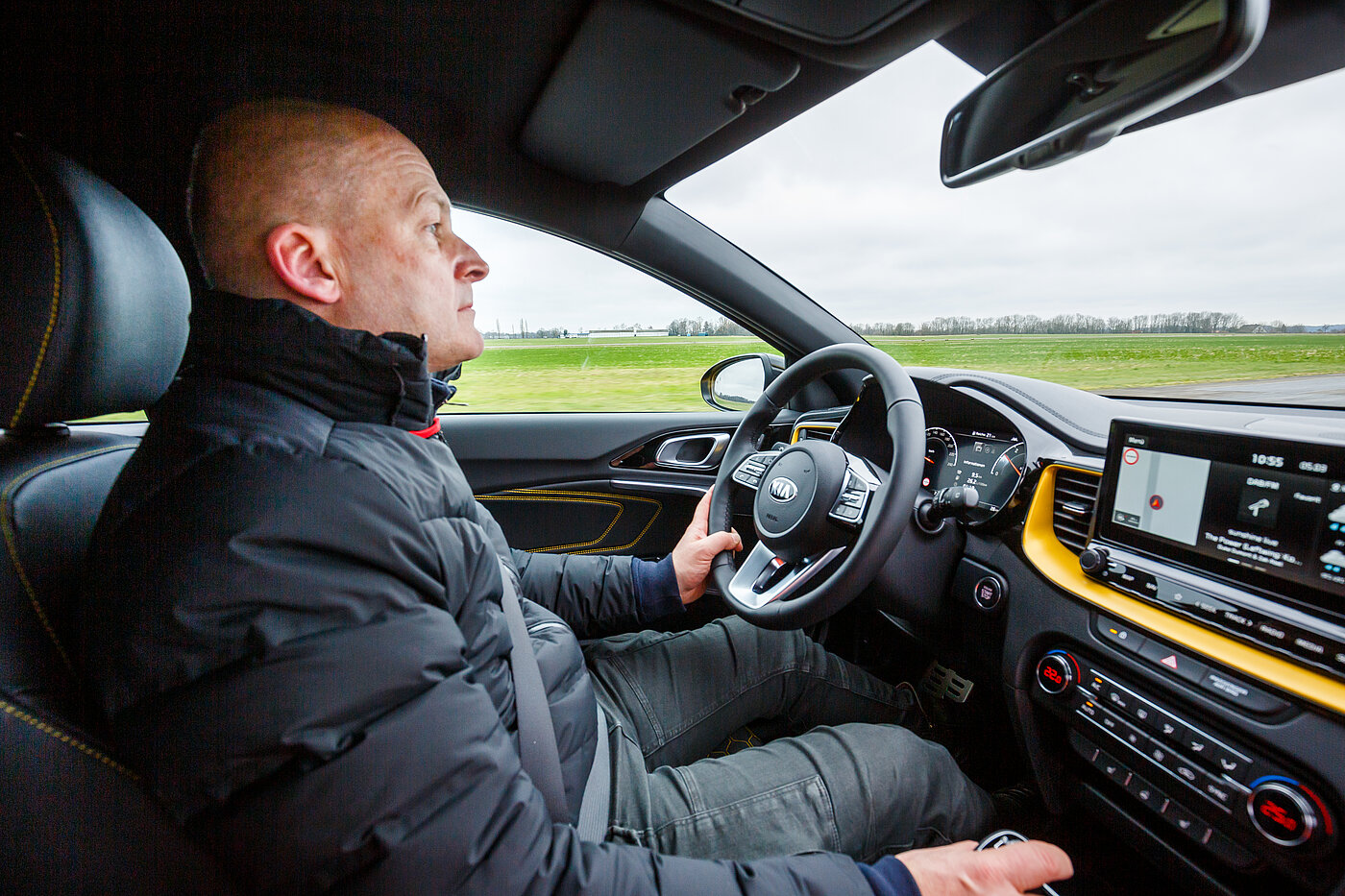Prof. Lutz Fügener
Professor Lutz Fügener began his studies at the Technical University Dresden, where he completed a foundation course in mechanical engineering. He then transferred to the Burg Giebichenstein University of Art and Design in Halle/Saale, Germany, where he obtained a degree in industrial design in 1995. In the same year, he became junior partner of Fisch & Vogel Design in Berlin. Since then, the firm (today called “studioFT”) has increasingly specialized in transportation design. Two years after joining the firm, Lutz Fügener became senior partner and co-owner.
In 2000, he was appointed as Professor of Transportation Design/3D Design by Pforzheim University and there chairs the prestigious BA degree course in transportation design. Lutz Fügener is also active as an author and journalist for a number of different daily newspapers, weekly magazines and periodicals, as well as blogs in which he writes on mobility-related design topics.

Red Dot in an interview with Prof. Lutz Fügener
What role will the car – or private transport in general – play in the future of urban mobility?
The significance of private transport in urban areas will not change significantly. However, in all probability, the role of the classic car will. The boundaries between private and public transport, which were clearly defined in the past and are still valid today, will increasingly become blurred.
Motor vehicles as means of mobility in urban areas are coming under increasing pressure to be more efficient – although this is not the case in rural regions. Space and energy requirements in relation to actual transport performance are already almost impossible to justify in view of the higher prices for land and the escalating energy costs. The time has come to develop more efficient alternatives that are no less attractive to users.
To what extent has e-mobility affected the shape of cars—or, in the mobility sector, design in general?
An all-electric drive makes it possible to have a different spatial layout within the vehicle than the one we are accustomed to in cars with combustion engines. So, in that respect, we may be seeing cars in new shapes and forms. A large concentration of technical units is no longer necessary, which makes it possible to raise the vehicles in order to achieve a better centre of gravity or to enable a quick change of the battery in the vehicle floor. Early electric vehicle models were designed to look like classic automobiles. Now we are seeing the first generation of these compact, slightly higher models.
Purely in terms of aesthetics, which era in automotive history do you remember most fondly?
The seventies – the golden age of imaginative and psychedelic concept cars. That was a great era of automotive design. Back then, an unclouded and – from today’s perspective – almost naive euphoria about the future gave rise to some amazing designs. And Concord was in the skies above them.
To what extent does the automotive industry also influence other sectors in terms of product design?
Vehicles have continuously increased their influence on product design over recent decades. Formal approaches were transferred, but also processes and structures tended to be used as models by design departments. But today that process of transfer is slowly reversing direction. The specialist disciplines of contemporary automotive design are no longer enough, for instance ensuring a high overall aesthetic quality and presenting exciting, innovative details. The disruptions that are essential to overcome today’s design challenges are now coming from other design teams that are more agile and openly structured.
Is it even possible for a car to achieve something like cult status today, like the Beetle or the Volvo P1800 ES?
Whether a car achieves cult status or becomes an icon depends to a great extent on the world around it. While it is always possible to achieve cult status, it cannot be forced or even planned, even though many marketing departments wish it could. Naturally, a product achieving cult status is always a tribute to the designer – regardless of the intentions of their clients or employers.
Do you see a need to catch up in the public transport sector when it comes to design? Are these vehicles already efficient enough?
There’s an enormous need to catch up in the public transport sector. But it isn’t just about the vehicles and their designs. The infrastructures definitely need to be better designed and innovated. Ultimately, whether progress is made in this area depends on the policymakers. One of the most important questions we need to answer relates to the profitability of public transport systems: Is a frequently used public transport service in a rural area a social obligation or a business model? Decisions like this have an enormous impact on design in the wider and narrower sense. Public transport models that are oriented to service rather than profit pave the way for highly innovative concepts in vehicle and infrastructure design.
What basic requirements do your mobility clients approach you with? Do they have anything in common?
Their needs are as different as people’s individual situations. For example, mobility requirements in a densely populated urban area are fundamentally different to those in rural regions. But there are some commonalities. One requirement that never changes is: journey time takes precedence over comfort. Most customers are happy to compromise on comfort if it means they get from A to B faster. This applies to users of all modes of transportation: road, rail and air.


